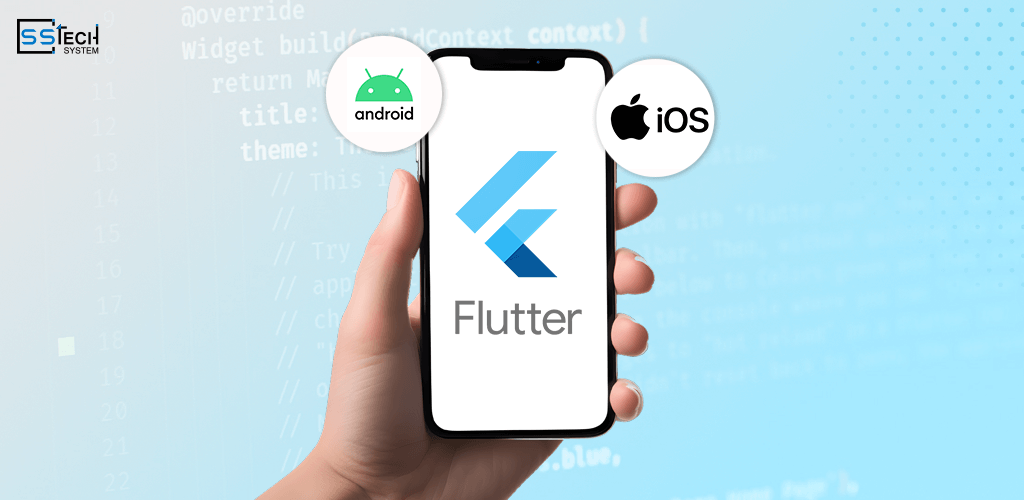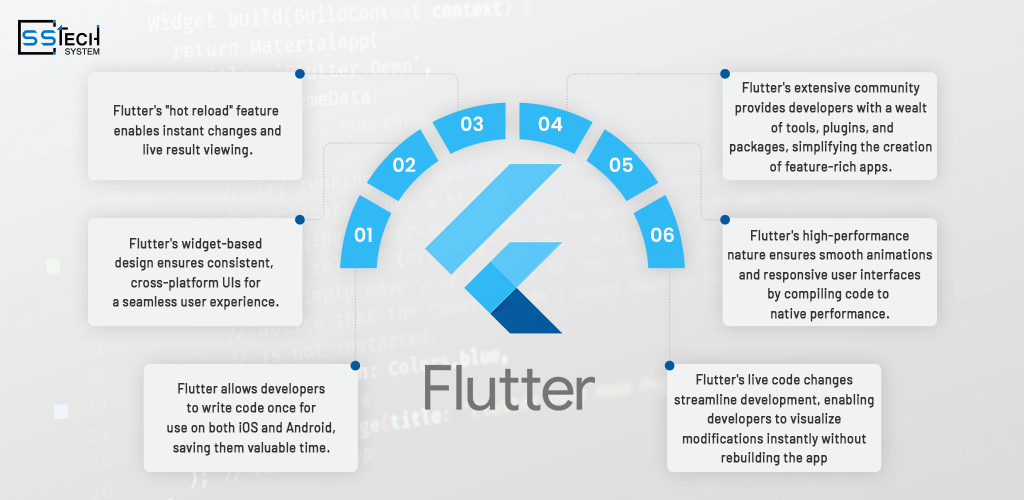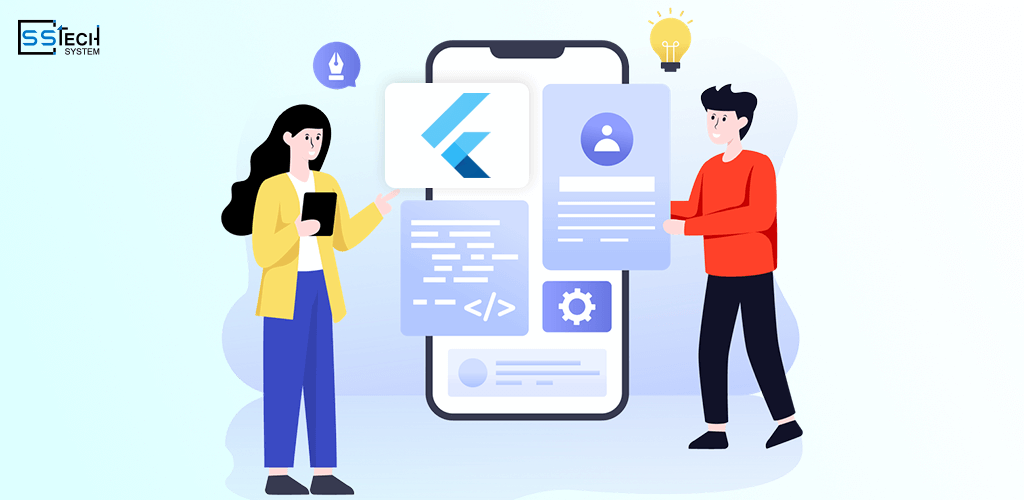
Today, mobile app development is the advance in technology plus as well as the core of technological progress in the fast-paced digital world. In a fierce competition for top-notch, feature-rich mobile apps, businesses are actively seeking the most expensive and fully loaded options available.
The capability of devices to synchronize data automatically without engaging the user in the process of transfer (good examples — smartphones and computers) have made customers very demanding and used to smooth experiences on different platforms. This implies that reliable common-software platforms have to be developed for their application.
Rise of Mobile App Development
Most mobile app development businesses have been following the trend of native iOS and Android programming for the past few years, and it’s no surprise since this has been the industry standard.
However, now, by means of assembling, mobile apps are making use of cross-platform tools. While coders struggle to work with tight deadlines, Flutter takes the development process a notch higher, making sure that the overall operations of apps are the same across different devices.
One of the reasons for the success of mobile apps today is the emergence of the multi-platform approach where the same application can run across different operating systems of both iOS app development and Android.
The cross-platform development design approach once again dictates the rules for app-making on mobile platforms. Cross-platform products do not require writing a different code for each system.
Writers can write a code once and then use it repeatedly on multiple publicity platforms, which significantly cuts time to market, saves money, and simplifies managing codes on different publicity systems. Concentrating on agility and competitiveness along with the growth prospect of innovations are conducive to the appeal for cross-platform mobile app development solutions.
The Emergence of Flutter
Google’s open-source UI toolkit Flutter is now a well-known cross-platform app builder. Flutter, released in 2017 and beloved for its speed, creative UI options, and “hot reload” functionality, empowers developers to see code changes instantly without restarting the app. With a growing developer community and a lot of tools and frameworks, Flutter is an appealing option to native code.
Advantages of Flutter App Development

Here are Some Key Advantages of Using Flutter for App Development:
- The “hot reload” feature in Flutter lets writers make changes right away and see the results.
- With Flutter’s widget-based design, developers can make UIs that look good and work the same way on all platforms, so users have a smooth experience.
- With Flutter, writers only have to write code once, and it can be used on both iOS and Android. This saves them time.
- High Performance: The created code for Flutter works like native code, so movements run smoothly and user interfaces respond quickly.
- With Flutter, it’s easy for developers to make apps with lots of features thanks to a large community of tools, plugins, and packages.
What are the Pros and Cons of Making Apps with Flutter?
Some of the pros and cons of Flutter app development include:
Pros:
- Quick restart: The quick restart feature in Flutter is one of its best features. It lets writers make changes to the code and see them right away in the app without having to rebuild it. This speeds up growth a lot, which lets engineers make changes quickly.
- Consistent UI across platforms: Flutter’s widget-based design and large collection of customizable UI components let developers make user interfaces that look good on both iOS and Android. This makes it easier for users and makes sure that the brand is consistent across all platforms.
- Single codebase for iOS and android: With Flutter, writers only have to write Dart code once, and it can be used on iOS, Android, the web, and PC. Getting rid of platform-specific codebases speeds up mobile app development.
- High performance: The created code for Flutter works like native code, so movements are smooth, user interfaces are fast, and apps start quickly. The Skia graphics engine makes it possible for Flutter apps to work well on smartphones with low-end hardware.
- Large ecosystem of libraries and tools: The tools, plugins, and packages for Flutter make development easier and give it more features. The community of state management libraries, testing frameworks, and UI design tools in Flutter makes it easy for developers to make apps with lots of features.
Cons:
- Plugin system: Through its plugin system, Flutter gives developers access to a lot of platform-specific APIs and features. However, they may still need direct access to native features that Flutter does not support. Developers may have to write code that works only on certain platforms or use plugins from outside sources, which can be hard to work with and make things less stable.
- Learning curve: The learning curve for new Dart and Flutter developers is steep. Flutter’s code and programming style are easy to understand, but developers who are new to Dart and Flutter may find it hard to grasp the framework’s tools, principles, and best practices. With time and experience, you can get past this learning curve with the help of literature, lessons, and the community.
- Flutter tries to make development the same on all platforms, but developers may need to add features or work with APIs that are only available on certain systems that Flutter doesn’t directly support. To join Flutter and native code, developers might need platform routes or custom tools, which could make development more difficult.
The Future of Developing Mobile Apps
In the future of cross-platform app development, mobile app development will be affected by a number of future mobile app trends and tools, such as:
- Personalized ideas, predictive analytics, and smart automation will change how people use mobile apps when AI and ML are used together.
- As smartwatches and fitness trackers become more popular, more apps that meet their needs are needed.
- Blockchain technology could make independent mobile apps safer, more open, and more trustworthy.
- Because screens come in a variety of shapes and sizes these days, flexible design ideas are important for making sure that users have a good experience on all of their devices.
Creating apps with Native vs. Flutter
While Flutter offers the advantages of speed and cross-platform development, native development takes the lead when apps require extensive platform-specific features or fine-tuning for performance. In flutter vs native app development, native programming lets coders use APIs and features that are only available on one platform to make the user experience better.
Many apps can use Flutter, especially ones that are short on time or money and need to save resources. It saves time and money without lowering quality. By letting developers use code reuse, quick eCommerce app development, and short feedback cycles, Flutter helps them make high-quality apps that meet the changing needs of both customers and businesses.
Conclusion
Lastly, the process of making mobile apps will be new, quick, and flexible. Cross-platform frameworks like Flutter will change the business by making it easier for developers to make high-quality apps for iOS and Android quickly and correctly. As companies focus on mobile-first policies and adopt new technologies, they will need to hire mobile app developers to develop apps affordably.
A top mobile app development company, SSTech System is leading this change by using cutting-edge technology and best practices to come up with unique solutions that help businesses grow and keep users interested. Professional developers at SSTech can help you make an app for eCommerce, a system for transportation, or an app that you can wear.
Get in touch with SSTech Apps Development team right away to set up a meeting with one of the experts to talk about the Flutter app development services and how it can help your business succeed.




